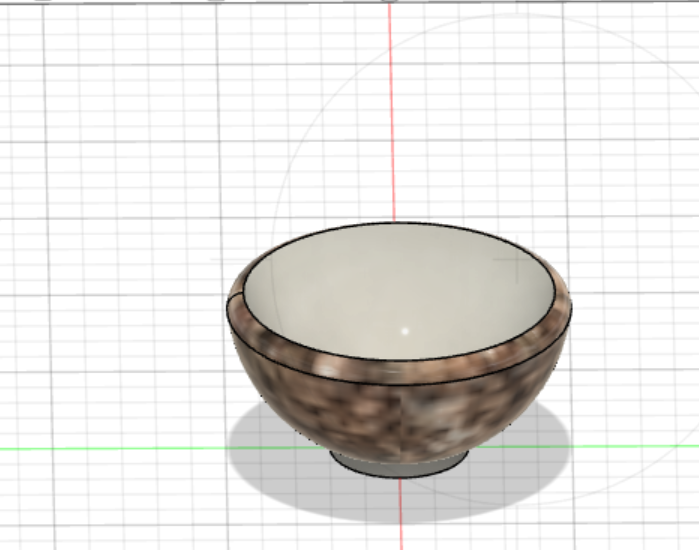
Making this model was a little bit difficult, just because it was hard for me to figure out what exactly the fillet tool does. I ended up taking 3 different approaches to make this bowl, and only the third one was successful. Ideally, I wanted to be able to have the brown rim extend down a couple millimeters on the inside, but I couldn’t figure out how to do that without also messing everything up, so I had to go without it. Frequently, when I would click on things, it would bring up a lot of menus that I didn’t know existed, and then I would have trouble closing those menus or accessing them again after they had been closed. There were several times where I would select something in an attempt to move it, but the move menu that was pulled up wouldn’t let me actually move it, just adjust the manner in which I would theoretically be able to move it. Overall, I found this software to be frustrating. It kept giving me errors, refusing to delete elements, and at one point I couldn’t even use the undo button. Once these issues happened, I had to restart the software, and then it would be fixed for a little while before happening again. In the areas of research or teaching, this tool can be used to show students intricacies of delicate objects by modelling them and then changing the proportions to make them bigger. Also, this could be used to inspect dangerous objects that can’t be handled or looked at without protective gear, like anything radioactive or just toxic for humans. My biggest tip for a fellow model maker would be to save your work frequently, as at one point I forgot to save, restarted the software, and lost all my work.